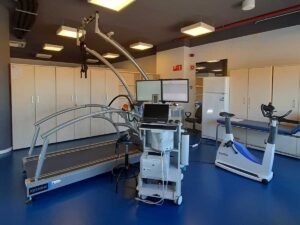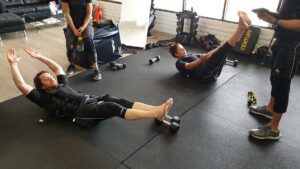Introduction
The purpose of this study was to determine the effectiveness of WB-EMS compared to HIT, to improve body composition and muscle strength in middle-aged men.
The main hypothesis was that HIT training was significantly more effective in improving muscle mass and maximum strength compared to WB-EMS.
Method
42 healthy men without training, aged 30 to 50, were randomly assigned in two groups: HIT Group (2 sessions / week) (n = 20) and WB-EMS group (3 sessions / 2 weeks) (n = 22 ) who exercised for 16 weeks.
WB-EMS was performed with intermittent stimulation with a duty cycle of 6 seconds of electrical impulse and 4 seconds of rest at a frequency of 85 Hz and a pulse width of 350 us for 20 minute
The main outcome parameters were lean body mass determined with DEXA machine and the maximum dynamic force of the leg extender (isokinetic leg press).
Results
No significant differences were detected in the groups. The strength of the leg extender also increased in both groups without significant difference between the groups. The corresponding changes were also determined for body fat and trunk extensor strength.
Conclusion
There were similar increases in muscle parameters after 16 weeks of WB-EMS compared to the “HIT” reference method. Therefore, WB-EMS can be considered as an attractive, time-efficient and effective option to perform HIT training for people looking to improve overall strength and body composition.
Bibliography
Kemmler W., Teschler M., Weibenfels A., Bebenek M., Fröhlich M., Kohl M., Von Stengel S. (2016). Effects of Whole-Body Electromyostimulation versus High-Intensity Resistance Exercise on Body Composition and Strength: A Randomized Controlled Study. Evid Based Complement Alternat Med 2016:9236809.







